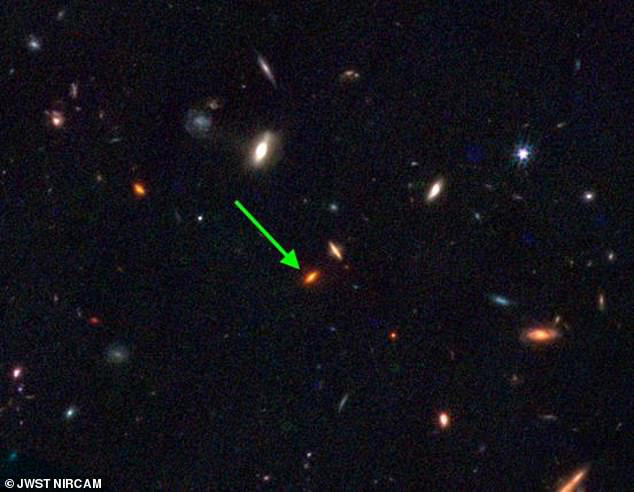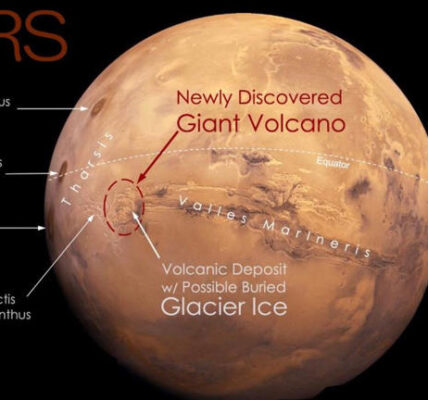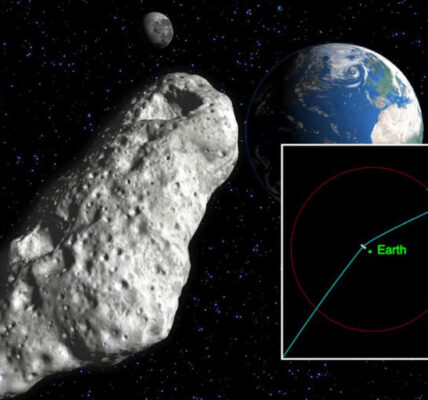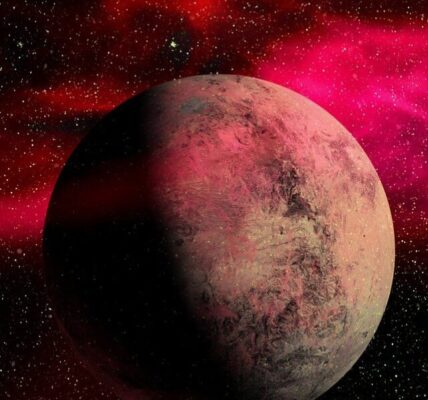Cosmic Joust Galaxy Collision spotted 11 billion light-years away reveals how quasars disrupt star formation and fuel supermassive black holes during galaxy mergers.

Cosmic Joust Galaxy Collision Captured 11 Billion Light-Years Away
Astronomers have witnessed an extraordinary event happening in deep space—what they are calling a Cosmic Joust Galaxy Collision. This spectacular cosmic encounter involves two galaxies smashing into each other at incredibly high speeds, more than 11 billion light-years from Earth. It offers scientists a rare chance to observe how such violent galactic clashes affect star formation and fuel black holes at the centers of galaxies.
This newly published discovery is not only visually striking but also scientifically important. It reveals how powerful quasars—supermassive black holes that emit intense radiation—can influence the evolution of entire galaxies.
A Battle of Galaxies in Deep Space
The term Cosmic Joust Galaxy Collision was given to this scene by researchers because of how the galaxies appear to be charging at each other like medieval knights. At the heart of this event is a quasar—a very bright, actively feeding black hole—located in the galaxy on the right.
The name of the quasar is J012555.11−012925.00, and it’s so bright that in regular telescope images, it usually looks like just a single point of light. But with the help of powerful instruments, scientists were able to spot the second galaxy, giving us an unusually detailed look at this Cosmic Joust Galaxy Collision.
How Scientists Spotted the Collision
To observe the Cosmic Joust Galaxy Collision, astronomers used a giant telescope setup in Chile called the Atacama Large Millimeter/submillimeter Array (ALMA). This observatory combines 66 radio dishes working together to form a single powerful telescope. Thanks to ALMA, researchers could clearly see not just the quasar but also its faint companion galaxy.
The second galaxy is currently being bombarded by the quasar’s radiation and is moving towards the quasar-hosting galaxy at an astonishing speed of 1.2 million miles per hour (2 million kilometers per hour). This tells us that these two galaxies are not just close to each other—they are actually colliding in real-time.
Radiation Disrupting Star Formation
One of the most shocking findings in the Cosmic Joust Galaxy Collision is what the quasar’s radiation is doing to the companion galaxy. Normally, galaxies contain large clouds of gas that come together to form new stars. But in this case, the quasar’s intense light is tearing that gas apart.
Scientists used another telescope in Chile, the Very Large Telescope (VLT), and a special tool called X-shooter to study the light from the quasar as it passed through the companion galaxy. What they found was that the gas wasn’t forming stars anymore. Instead, it had broken into small clumps—called “cloudlets”—that were too tiny and scattered to produce new stars.
This proves that the quasar is actively preventing the galaxy from growing by halting star formation. It’s the first time researchers have directly seen how a quasar’s energy can break down the very building blocks of stars in another galaxy.
Black Hole Gets a Powerful Boost
While the smaller galaxy is being stripped of its ability to grow, the galaxy with the quasar is actually thriving. During the Cosmic Joust Galaxy Collision, gravity is pulling huge amounts of gas from the companion galaxy into the quasar’s black hole. This added fuel allows the quasar to burn even brighter and grow larger.
According to researchers, these kinds of galactic collisions may be one of the main ways supermassive black holes grow in the early universe. As galaxies crash together, gas gets funneled into their centers, feeding the black holes and powering up quasars.
Why the Cosmic Joust Galaxy Collision Matters
This Cosmic Joust Galaxy Collision is much more than just a pretty picture from space. It gives scientists real data to understand how galaxies evolve and change over time. For years, astronomers believed that galaxies slowed down star formation naturally as they aged. But this discovery shows that quasars can play a much more active role by directly destroying star-forming gas.
It also explains why some galaxies in the early universe appear to suddenly stop forming stars. Events like the Cosmic Joust Galaxy Collision may be to blame—quasars blasting nearby galaxies and changing their fate forever.
Looking Back in Time
One fascinating part of this discovery is that it happened 11 billion light-years away. That means we’re seeing it as it was 11 billion years ago, not as it is today. So, this Cosmic Joust Galaxy Collision is actually giving us a window into the past—into a time when the universe was still young, just a few billion years after the Big Bang.
By studying such ancient events, scientists can piece together the history of our universe and learn how the galaxies we see today—including our own Milky Way—came to be.
What’s Next in Galactic Research
With powerful tools like ALMA and the VLT, astronomers hope to find more events like the Cosmic Joust Galaxy Collision. Each one provides a piece of the puzzle. As we discover more of these cosmic clashes, we’ll better understand how galaxies grow, why they stop forming stars, and how black holes become the giants we see at the centers of galaxies.
This research was recently published in the scientific journal Nature and co-led by Pasquier Noterdaeme from France and Sergei Balashev from Russia.
Conclusion: A Violent but Enlightening Encounter
This galactic clash, fueled by a hungry quasar, shows just how interconnected everything is in space.
From star formation to black hole growth, these interactions shape the universe in ways we’re only beginning to understand. Thanks to cutting-edge telescopes and passionate scientists, we now have a front-row seat to one of the most spectacular shows in the cosmos.
Also Read:
Life on Mars Was Possible: 5 Stunning Discoveries



